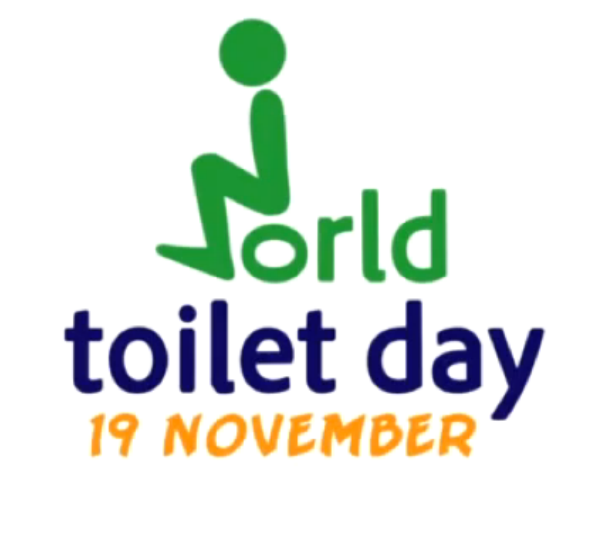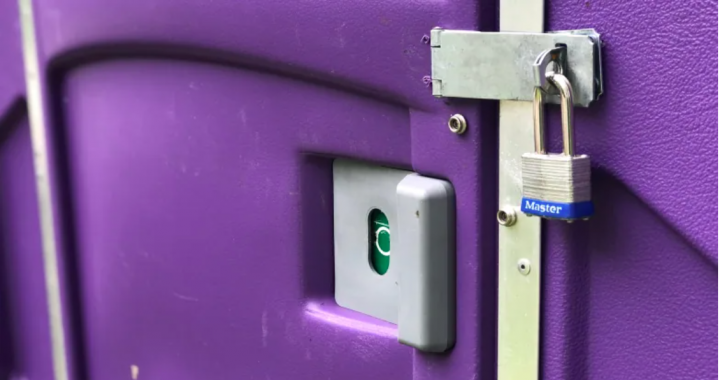The pandemic has made more people aware of how few places there are to go — and advocates say it’s time to embrace bathrooms as public-health infrastructure
TVO, Jul 07, 2020
Diane Peters
The aftermath of one of the pandemic’s most notorious moments in Ontario — the Saturday in May when Toronto’s Trinity Bellwoods Park turned into a jam-packed outdoor party — was not a slew of positive COVID-19 tests. It was the human waste left in the yards and driveways of nearby residents.
Like most municipalities across the province, the City of Toronto had closed its public washrooms, including those in parks. While the province never explicitly mentioned public washrooms in its emergency orders, cities and towns bolted them up anyway, in part to keep people at home.
The strategy failed messily at Trinity Bellwoods and in places such as Niagara-on-the-Lake, where highway signs telling tourists to turn around and closed washrooms led to urination in bushes and behind buildings.
The pandemic, in fact, has offered a series of reminders of the value of public washrooms. Everybody goes, and, when in public, they need a public place to go. To wash your hands thoroughly and regularly, you need running water — not just a squirt of hand sanitizer. For the vulnerable in our midst, who are most at risk for illness, accessible services can help mitigate that risk. The conclusion seems obvious: we need plentiful public washrooms, ideally clean ones designed to keep germs at bay.
“The timing is perfect for public washrooms to be declared essential public-health infrastructure,” says Bessa Whitmore, a member of the Ottawa-based group GottaGo!, which advocates for the creation of “a network of, and signage to, safe, free, clean and environmentally responsible public toilets and water fountains.”
The pandemic, says Tim Pyle, executive director of the American Restroom Association, “has given us the opportunity to reassess things — there’s going to be a bigger emphasis on cleanliness. And it gives us a chance to say what our dream would be, in terms of how our restrooms are designed and placed.”
Such a dream doesn’t relate only to practical matters: it’s also philosophical. “When the pandemic is over, I’m hoping the lesson we’ve learned is that bathrooms are important infrastructure for any urban environment and to maintain a civic society,” says epidemiologist Raywat Deonandan, associate professor at the University of Ottawa’s Faculty of Health Sciences.
But herein lies the dilemma: We more deeply understand the need for public toilets and what they symbolize. But these already expensive facilities will cost even more to upgrade and maintain if we’re also concerned about infectious-disease control.
Pre-COVID-19, we already didn’t have enough public washrooms. Municipalities run facilities at parks and beaches and inside libraries and community centres, but it’s rare to find a washroom one can use while out shopping or working. Some tourist hubs, such as Niagara-on-the-Lake, offer public washrooms, but in most downtowns, they don’t exist at all. Some regions have talked about installing more, but little has come of it. The City of Toronto promised back in 2010 that it would install 20 automated pay-per-use toilets. It’s put up just three — and in locations not considered convenient for shoppers, tourists, or the vulnerable people who need them. It took years of advocacy from GottaGo! to convince the city’s LRT system to include two additional washrooms, instead of just facilities at the line’s terminal stations. (It has also succeeded in getting portable toilets set up at summer splash pads around town.)
Because of a lack of public facilities, when most people go out, they flush at the mall or coffee shop. “Municipal governments have ceded their responsibility to companies and fast-food providers,” says Pyle. “And we, as a society, have been okay with that.” This passes on the cost to businesses and creates opportunities for discrimination — and barriers to access for vulnerable people.
Plus, as we found out this spring, when businesses close, so do their toilets. “This is a matter of human decency,” Teamsters Canada national president François Laporte said on April 2, speaking of truckers out on their hauls with no access to bathrooms. “Nobody can be expected to work an entire day without using a bathroom.” Indeed, while their usual rest stops, coffee shops, and community centres were closed, paramedics, police, taxi drivers, and others had nowhere to go. In response to complaints, truck stops and highway locations of Tim Hortons opened.
Some cities have stepped up to give vulnerable groups better access. In late April, Durham region opened some of its community centres and added portable facilities to offer toilets and showers. The City of Toronto opened several portable washrooms, handwashing stations, and showers in early May. It wasn’t until May 18 that the province amended its emergency orders and explicitly mentioned washrooms, stipulating that they could be open. Many municipalities have been gradually opening their facilities over the last several weeks.
These days, parks and beaches are packed, so you’ll often see a lineup at their corresponding public washrooms. Tourist towns are flooded, and with some businesses that offered facilities still closed, they’re struggling with capacity. The town of St. Jacob’s, for instance, is saying it has an “urgent need” for more washrooms: the local business-improvement area is scrambling to increase capacity in a town that’s packed with daytrippers visiting its farmers’ market.
As well as discussing capacity, people are now talking about cleanliness and hygiene-friendly design in public spaces. The American Restroom Association has issued a statement that includes suggestions for making washrooms safer in a pandemic, including blocking off every other urinal, having sensor-activated taps, and installing toilet lids (so that one can prevent the dreaded “toilet plume” that shoots germs into the air during a flush). It’s also offering tips to make school bathrooms safer. “When schools open,” Deonandan says, “bathrooms will become increasingly important.”
We may now be more prepared to prioritize these public spaces, which have so much potential to promote hygiene and accessibility, and allow people to enjoy the outdoors and support local economies.
But the new COVID-19 bathroom costs more — and so do other things. “Right now, from the public’s perspective, there are a lot of things that are competing for attention — things that rightly deserve attention,” says Pyle. “My concern is that the necessity for more public washrooms will take a back seat.”
Deonandan says he’s hopeful that governments will find the cash: “One thing we’ve learned during this pandemic is there’s a lot of money out there. Funny how there’s enough money to augment everyone’s income in the entire country right now, yet, a year ago, we could not pay for some school supplies.”
As a society, Deonandan says, we will likely care about access to toilets and handwashing water for a long time to come. “Public health had fallen in priority, but now it’s number one on people’s minds. And public health includes public hygiene, which includes public bathrooms.”
Diane Peters is a Toronto-based writer, editor, and teacher.



